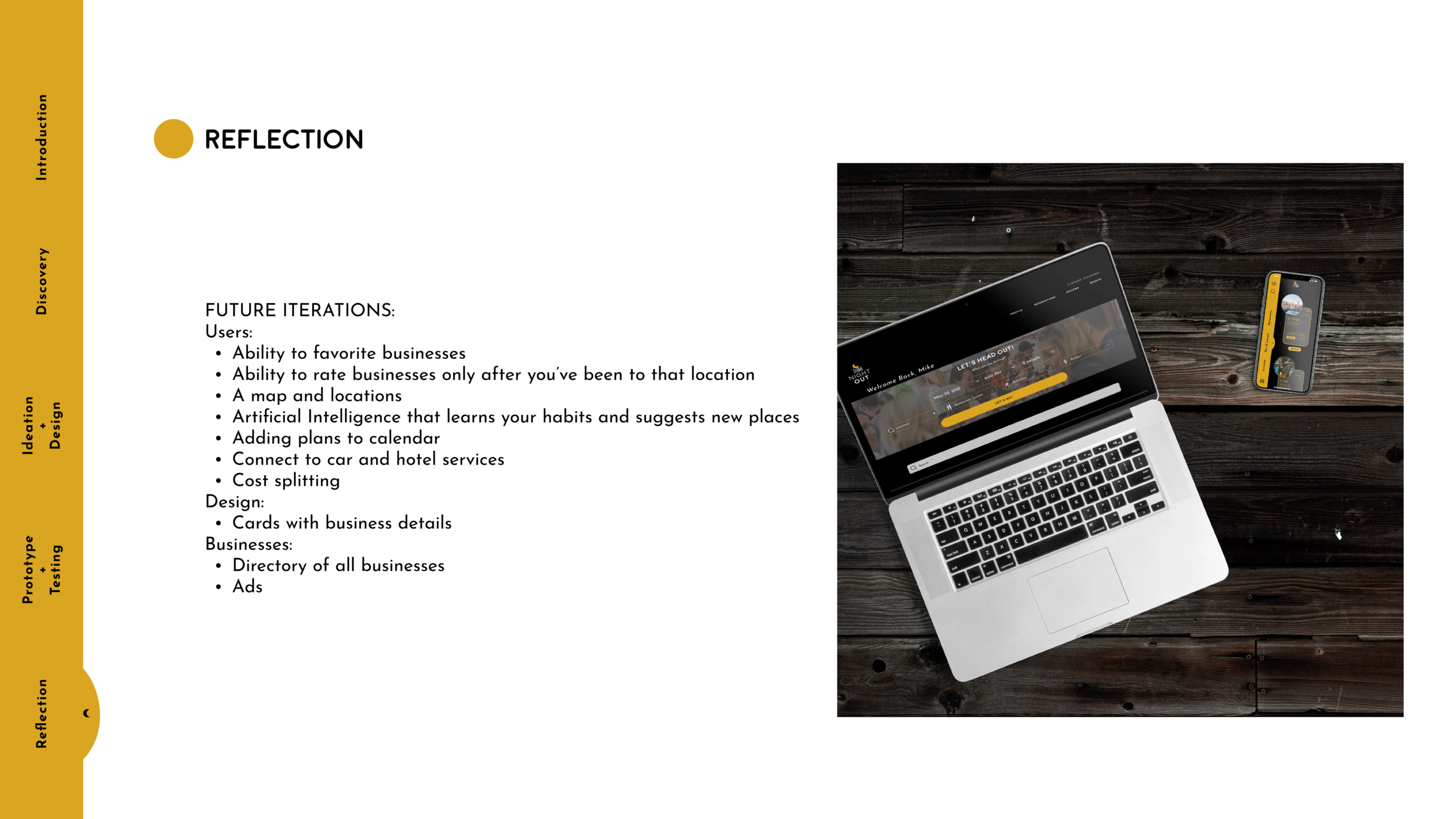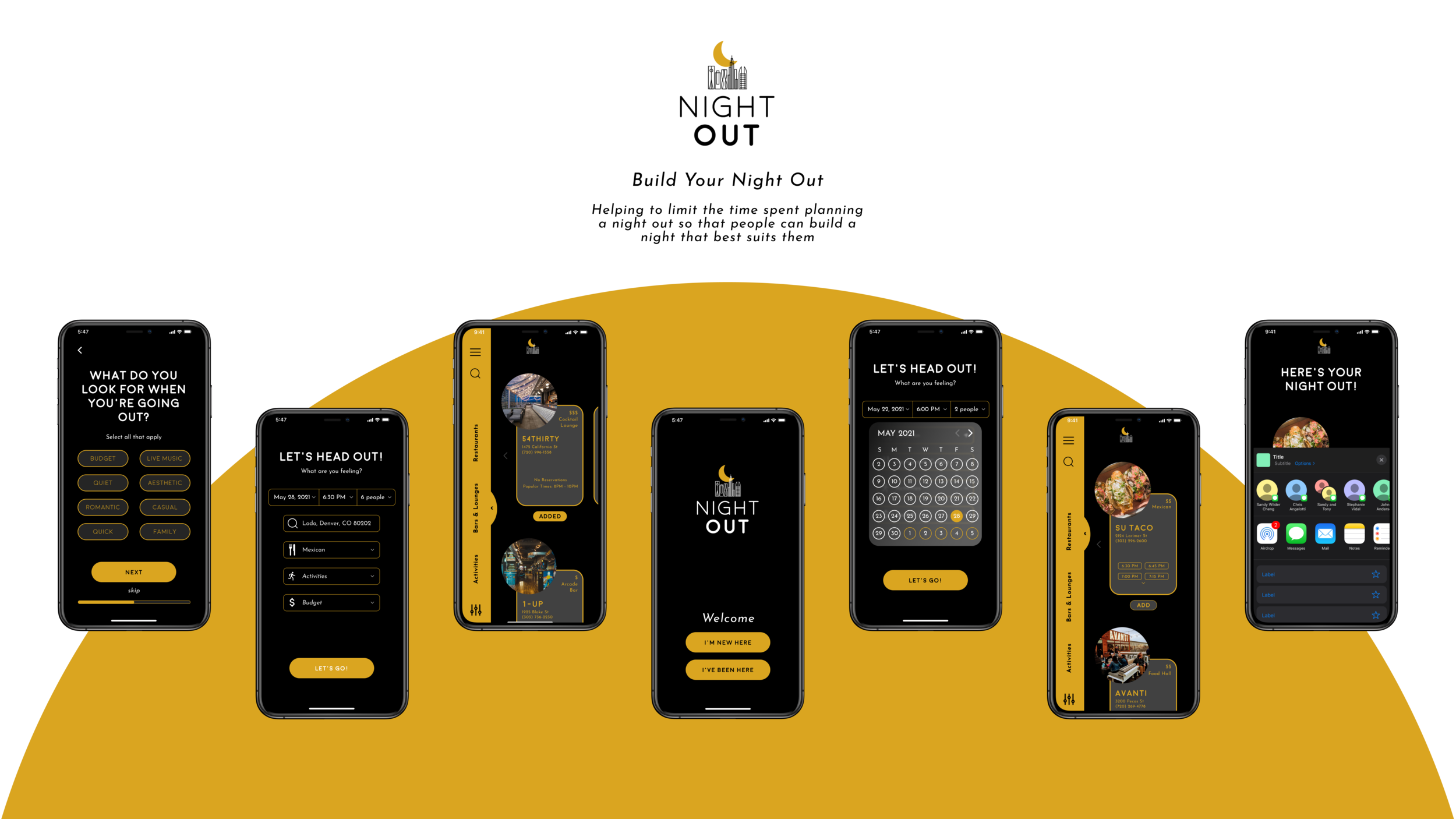
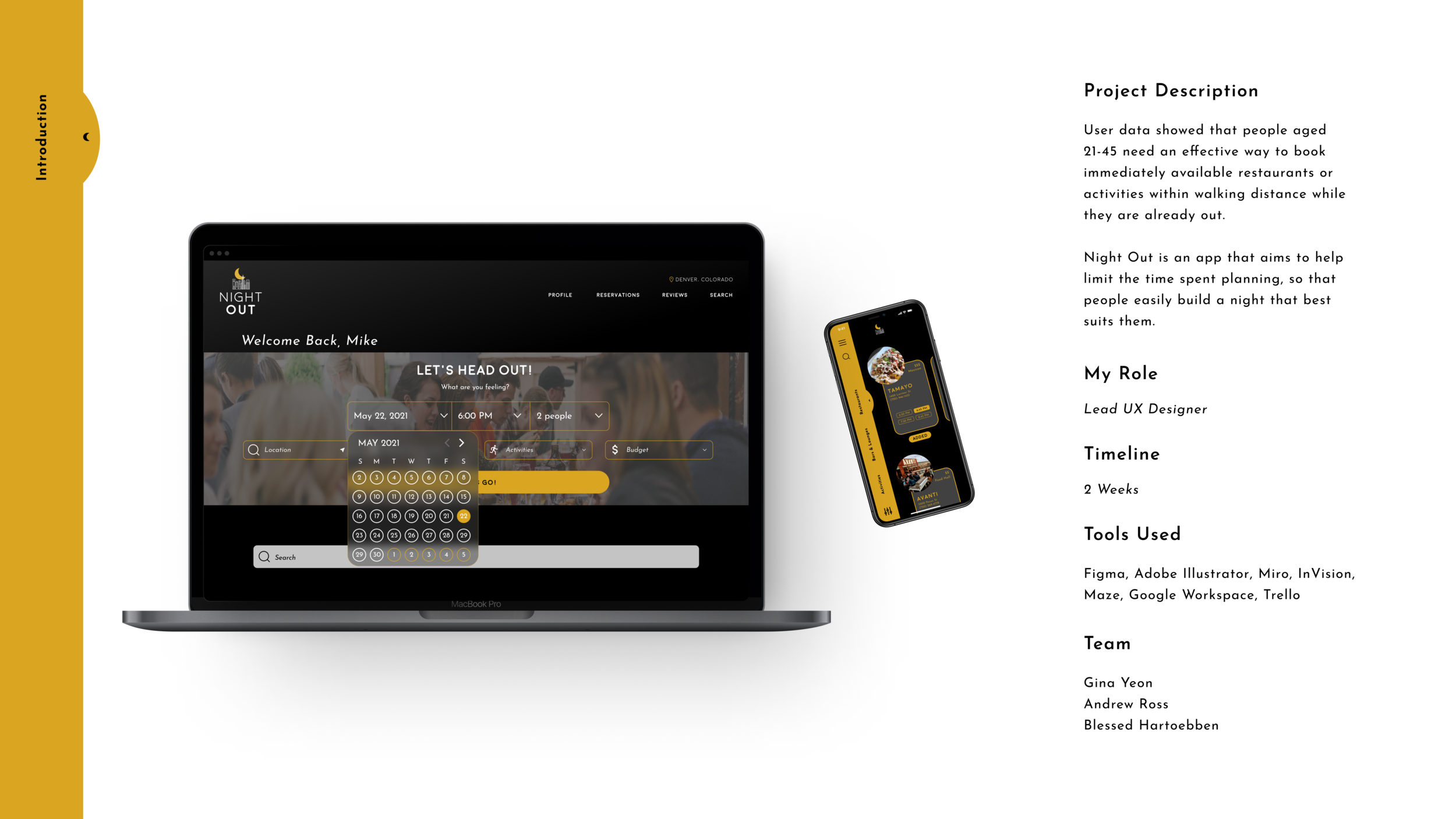
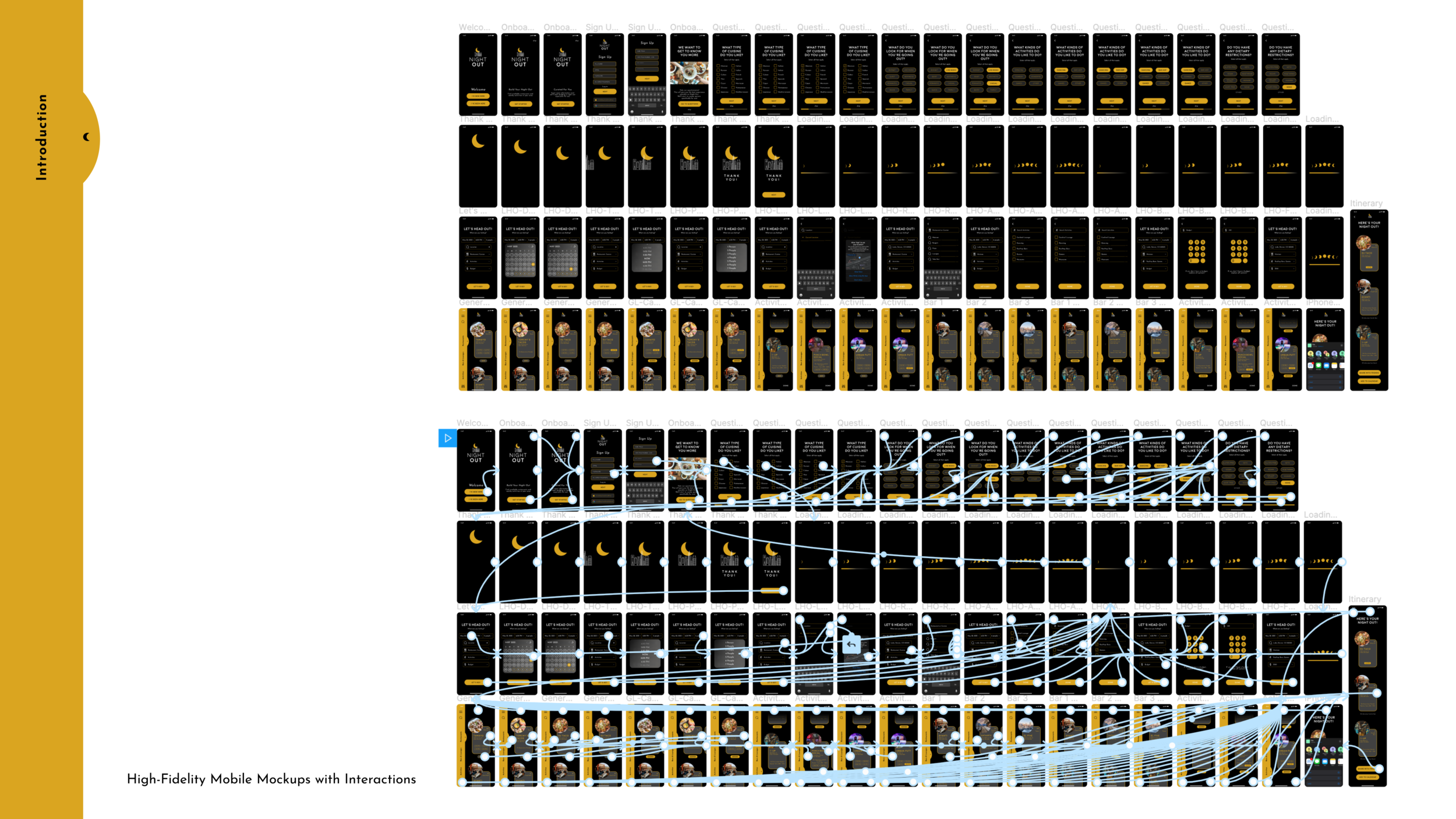
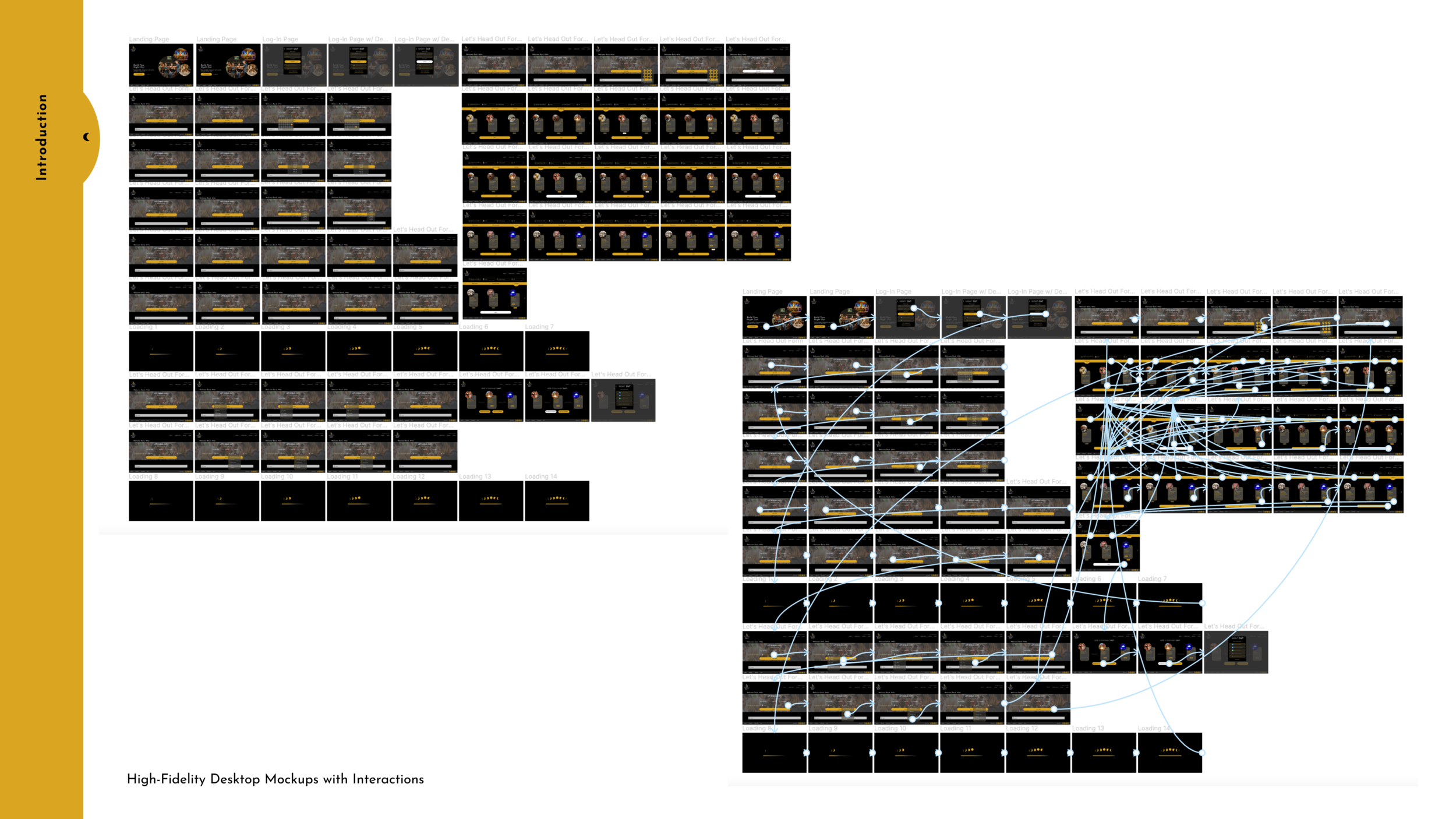
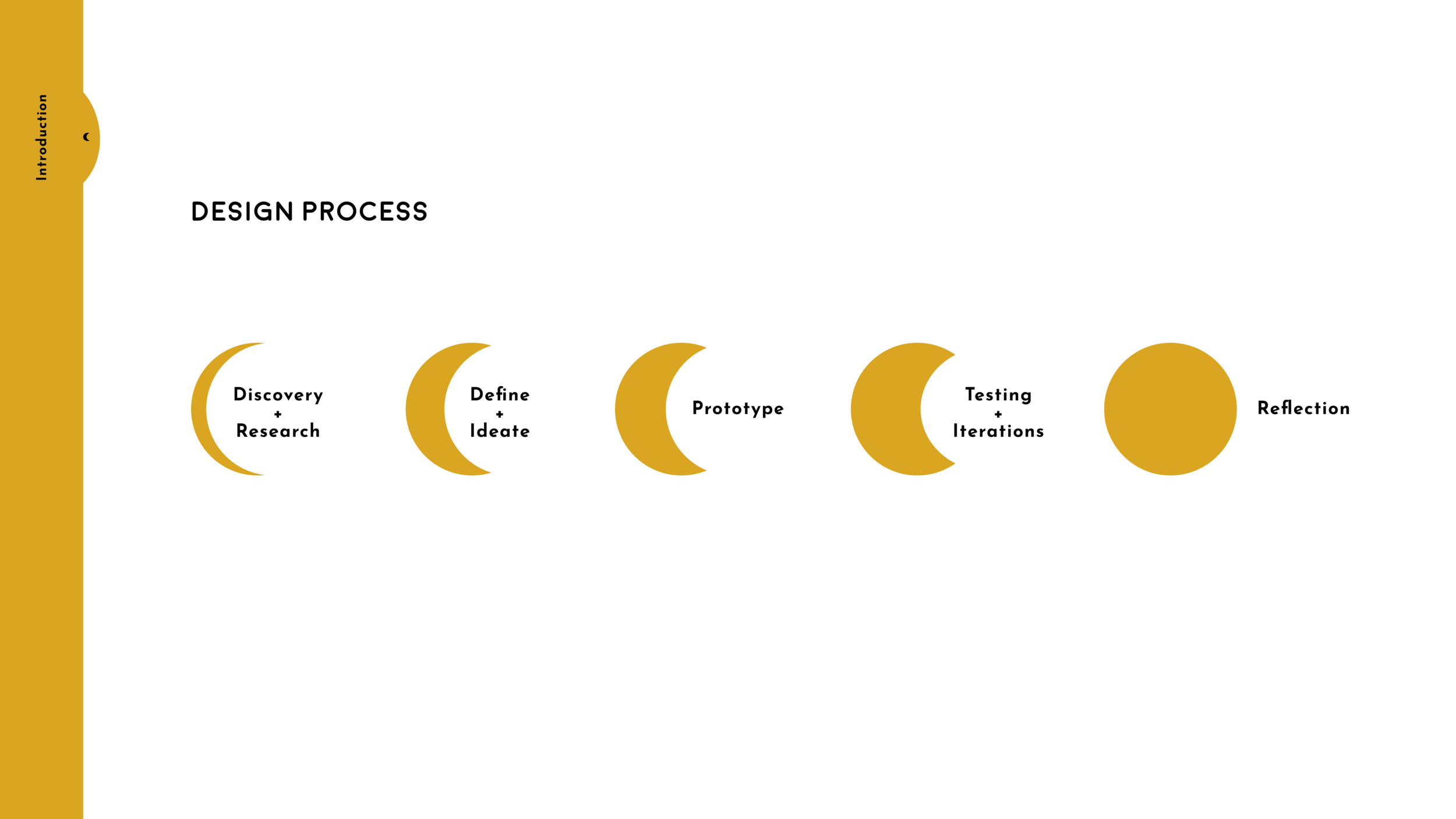
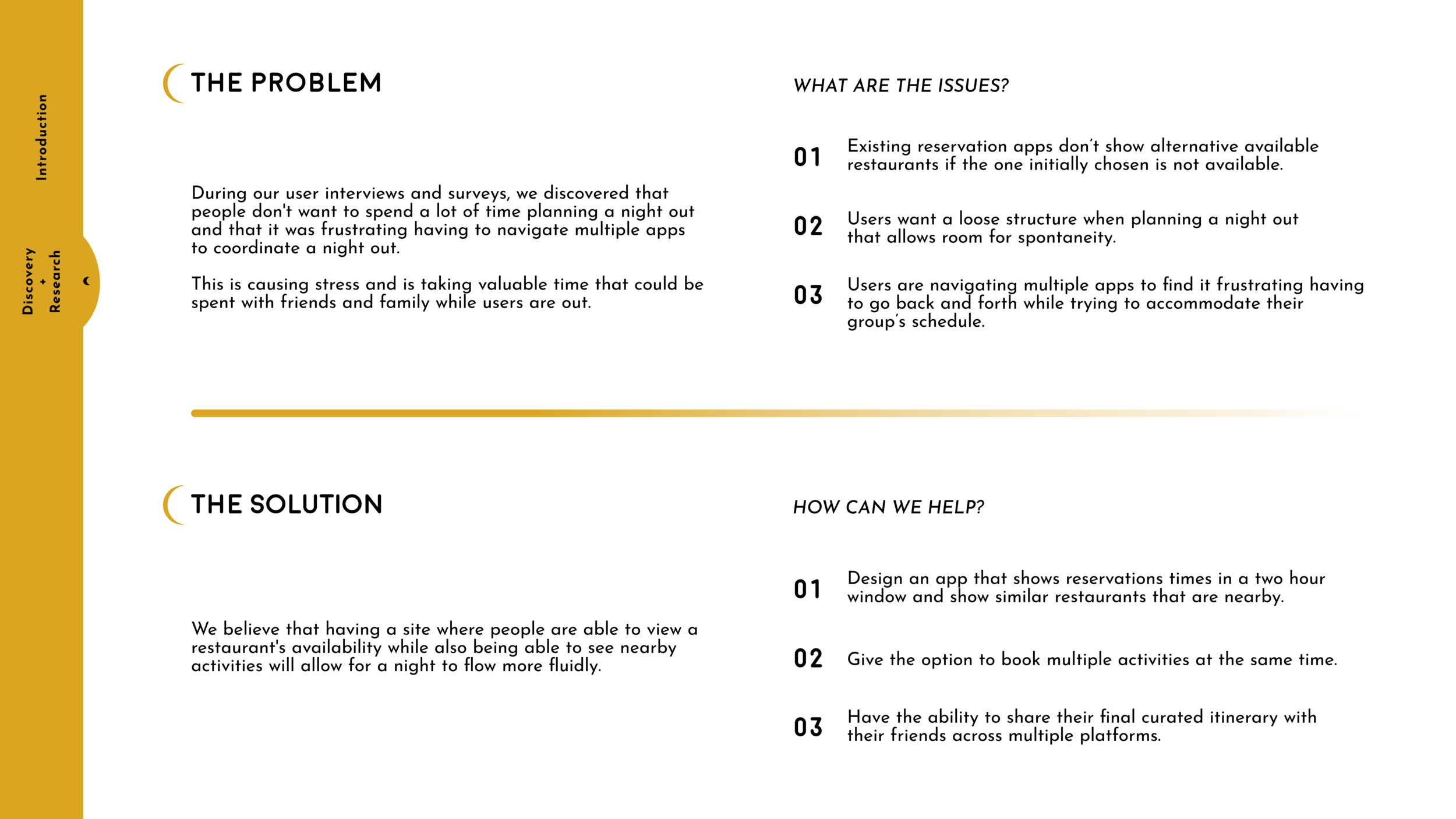
Discovery & Research
Using a mix of qualitative and quantitative data, we began gathering insight into our user research plan.
Our objectives were mostly to figure out how a person plans their nights out, what factors or decisions go into planning a night, and what services they’re currently using to plan an outing.
We filtered through all of our data and found that our users felt very similarly, and they felt a lot about the planning process. Our initial affinity diagram had 13 themes that we could group our findings on. We were able to limit those further down to 10 and using ideation and brainstorming, we chose to pursue 3 features.
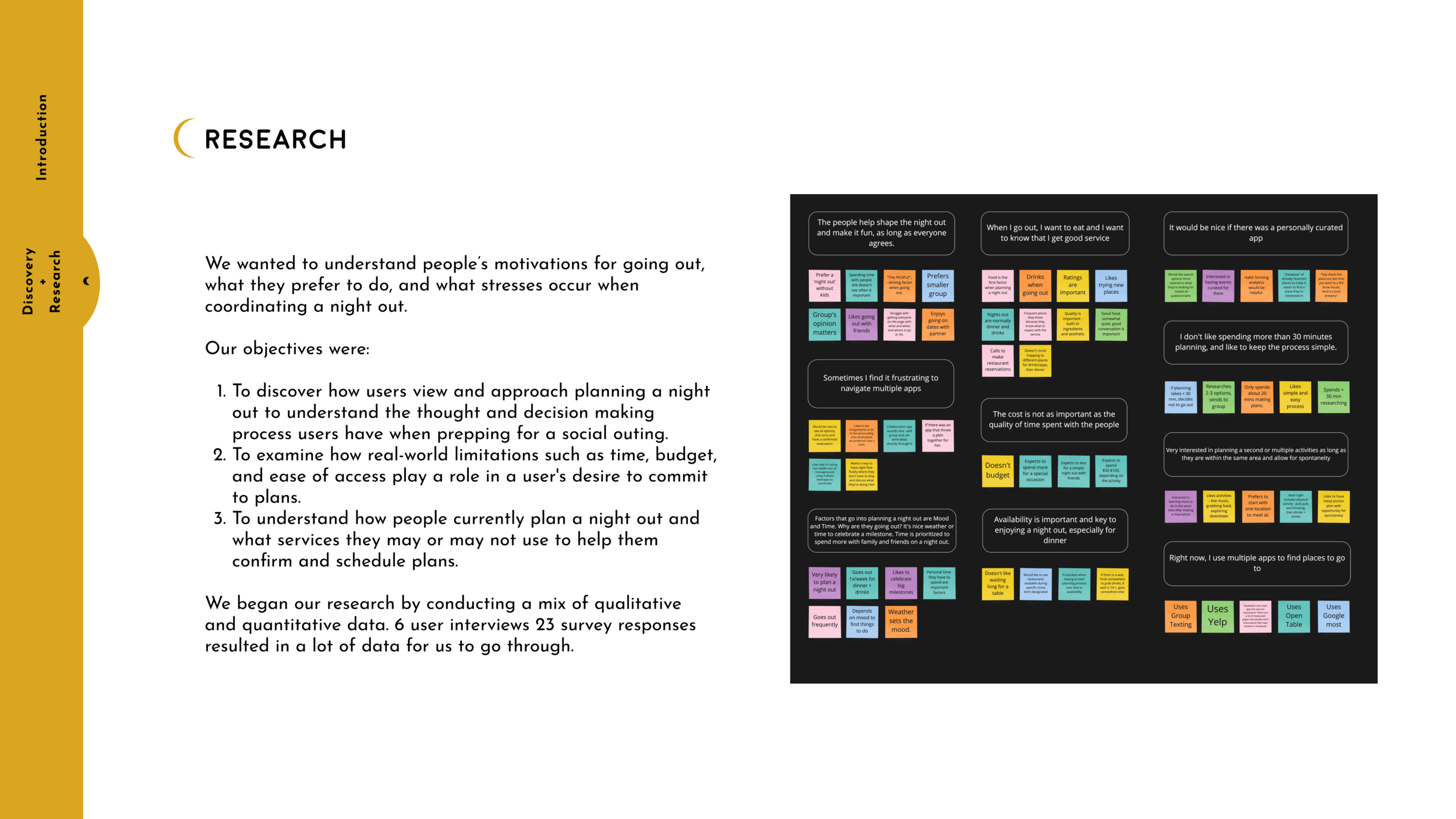
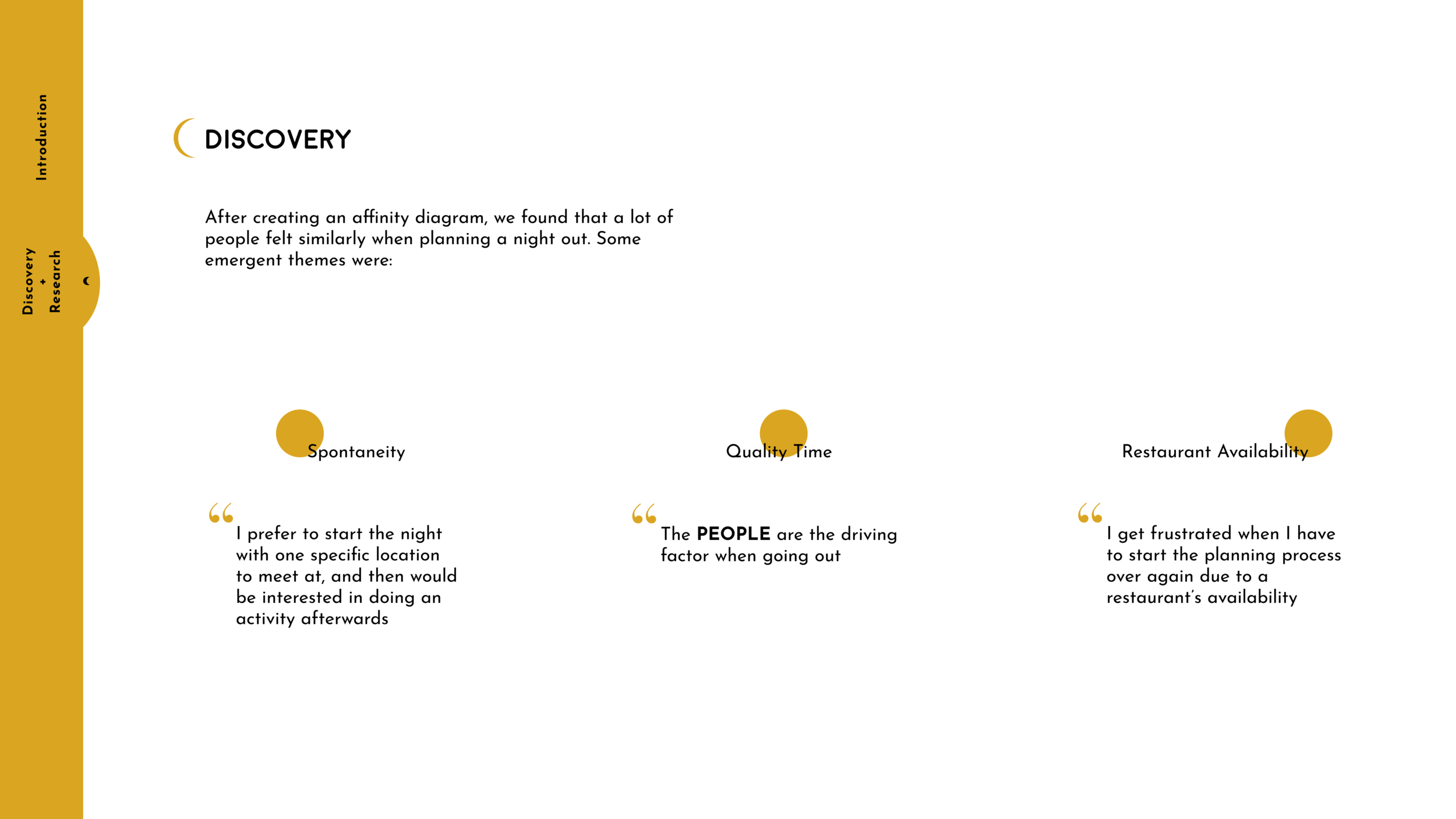
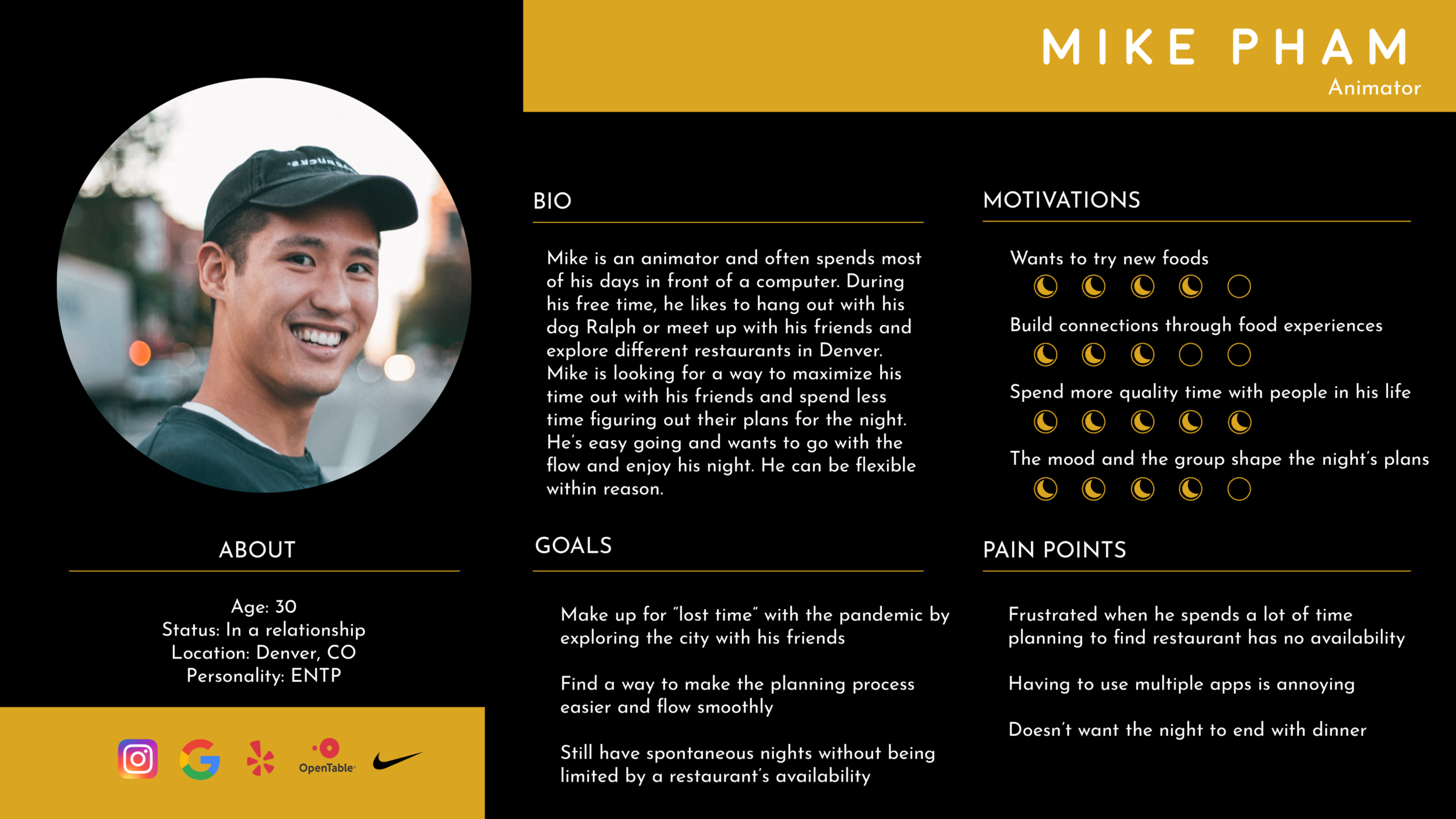
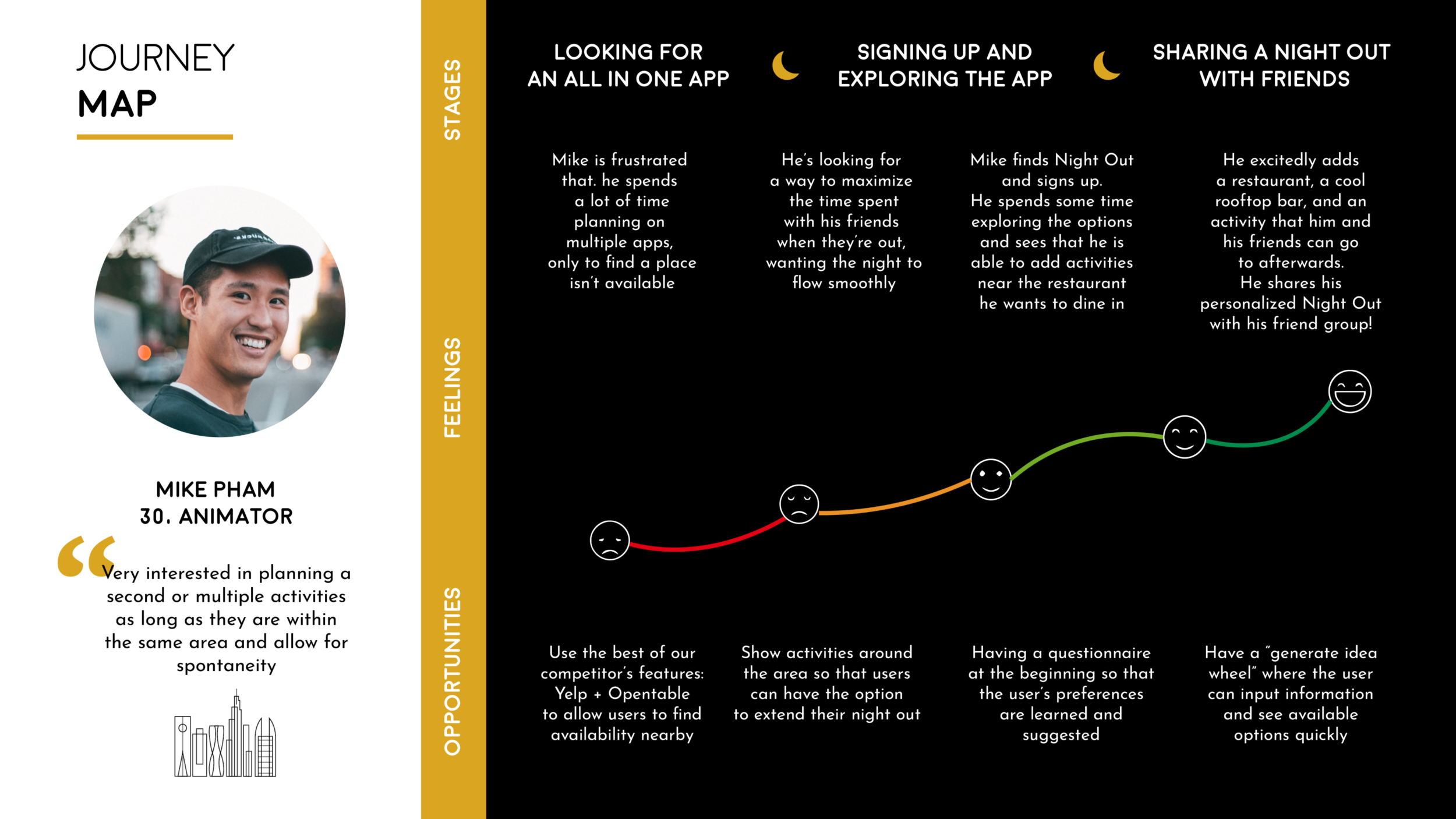
Research + Ideate
Focusing on three main themes, Mike, our user persona was created. He encompassed the wish for spontaneity, disliking long planning processes and having to use multiple apps to plan a night out.
Creating his journey map allowed us to find opportunities that would alleviate some of the pain points and frustrations to be more aligned with his goals and motivations.
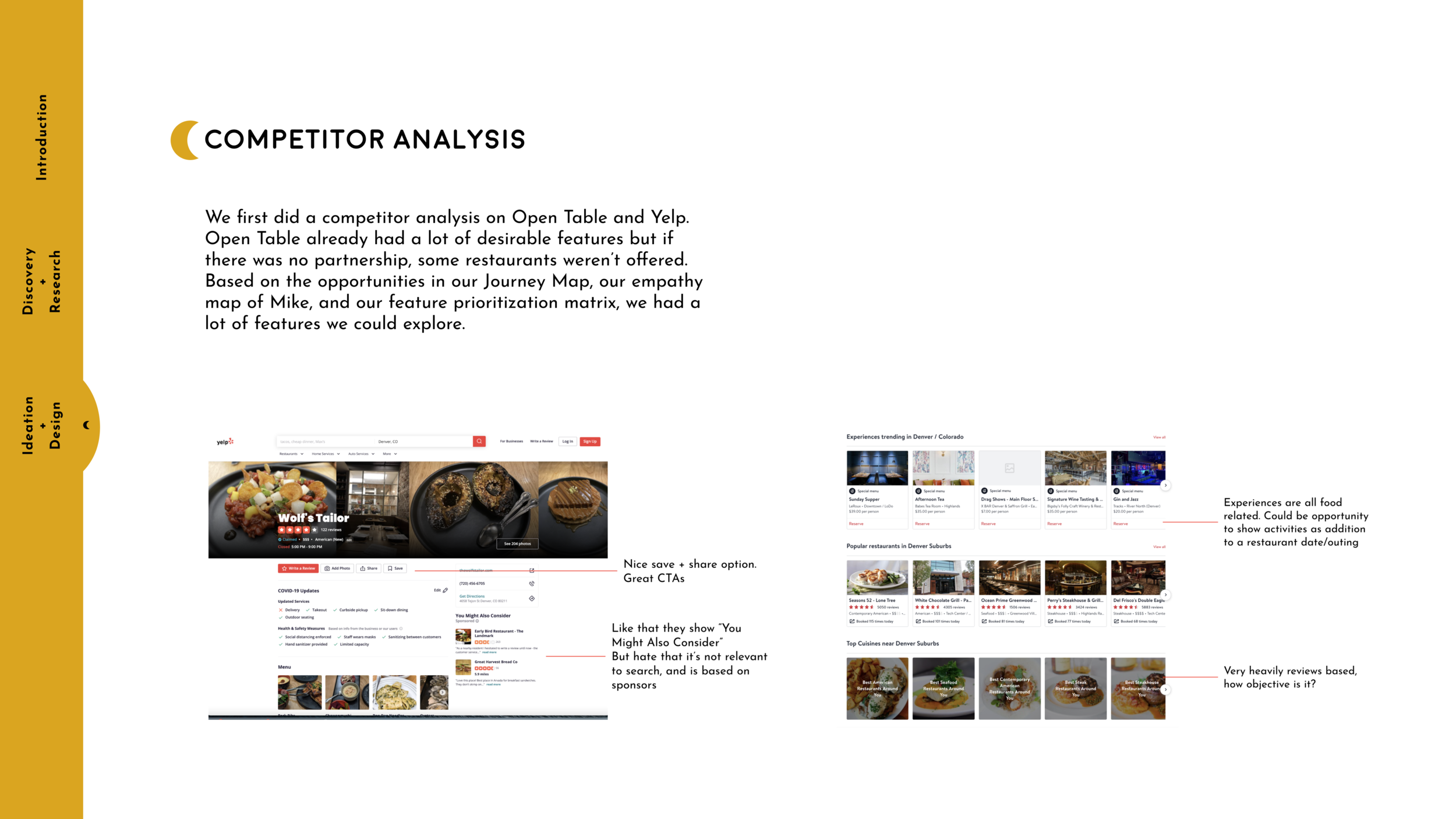
Design + Prototype
Before moving on to the high fidelity prototype, we ran a SWOT analysis to find out where our competitor’s strengths and weaknesses were. This is where scope creep came in. Using all of the data, we created a feature prioritization matrix looking at which features were feasible to build out in our limited time, which ones our user persona Mike had the most to gain from, and saving the features we could build upon later with businesses and stakeholders in mind for a future iteration.
We also created a branding and style guide for the high-fidelity mockup build. We wanted the app to be clean and simple. We chose to design in dark mode and wanted the photography choices to clearly show activities, food, or capture the ambiance of a location.
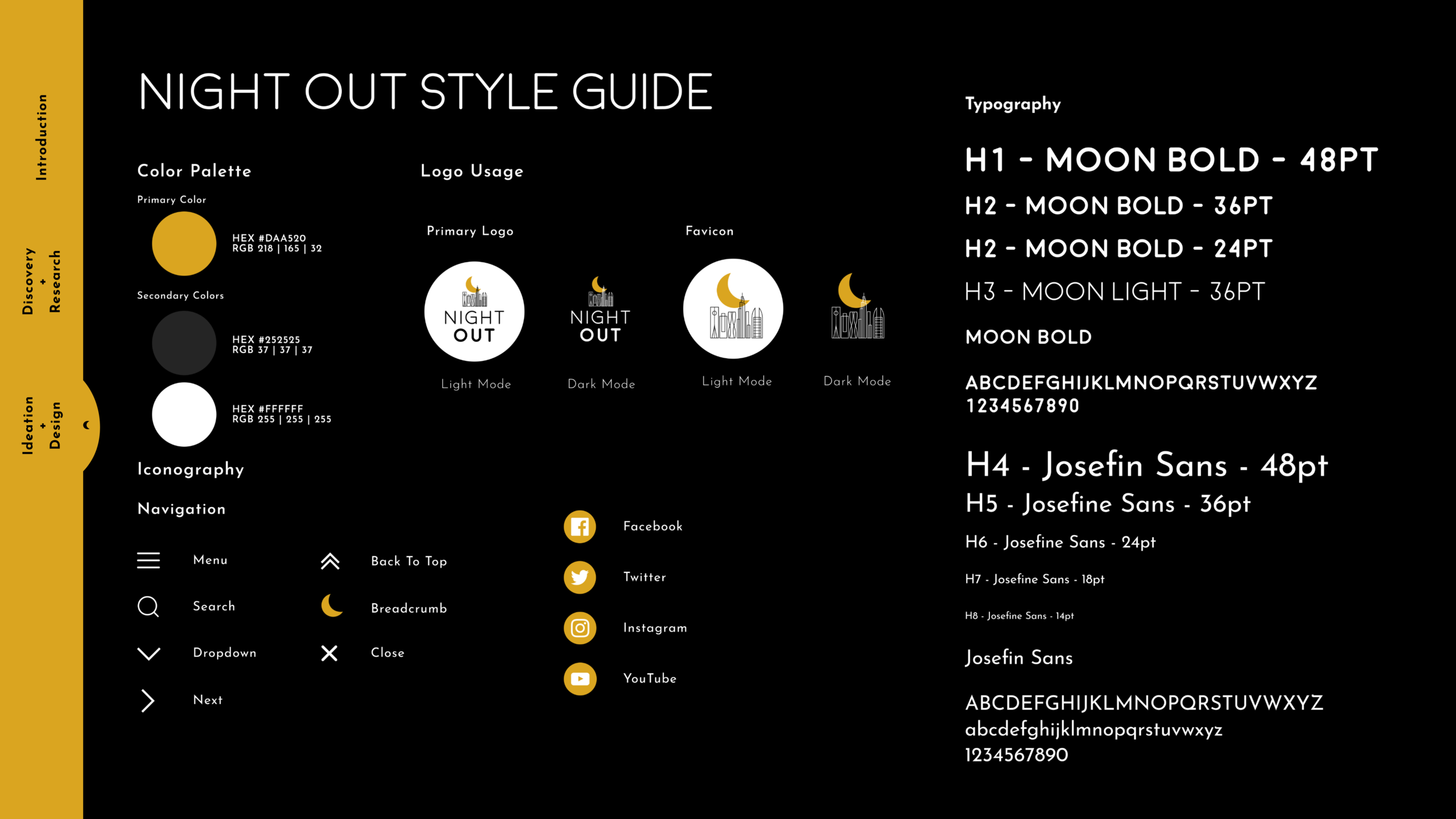
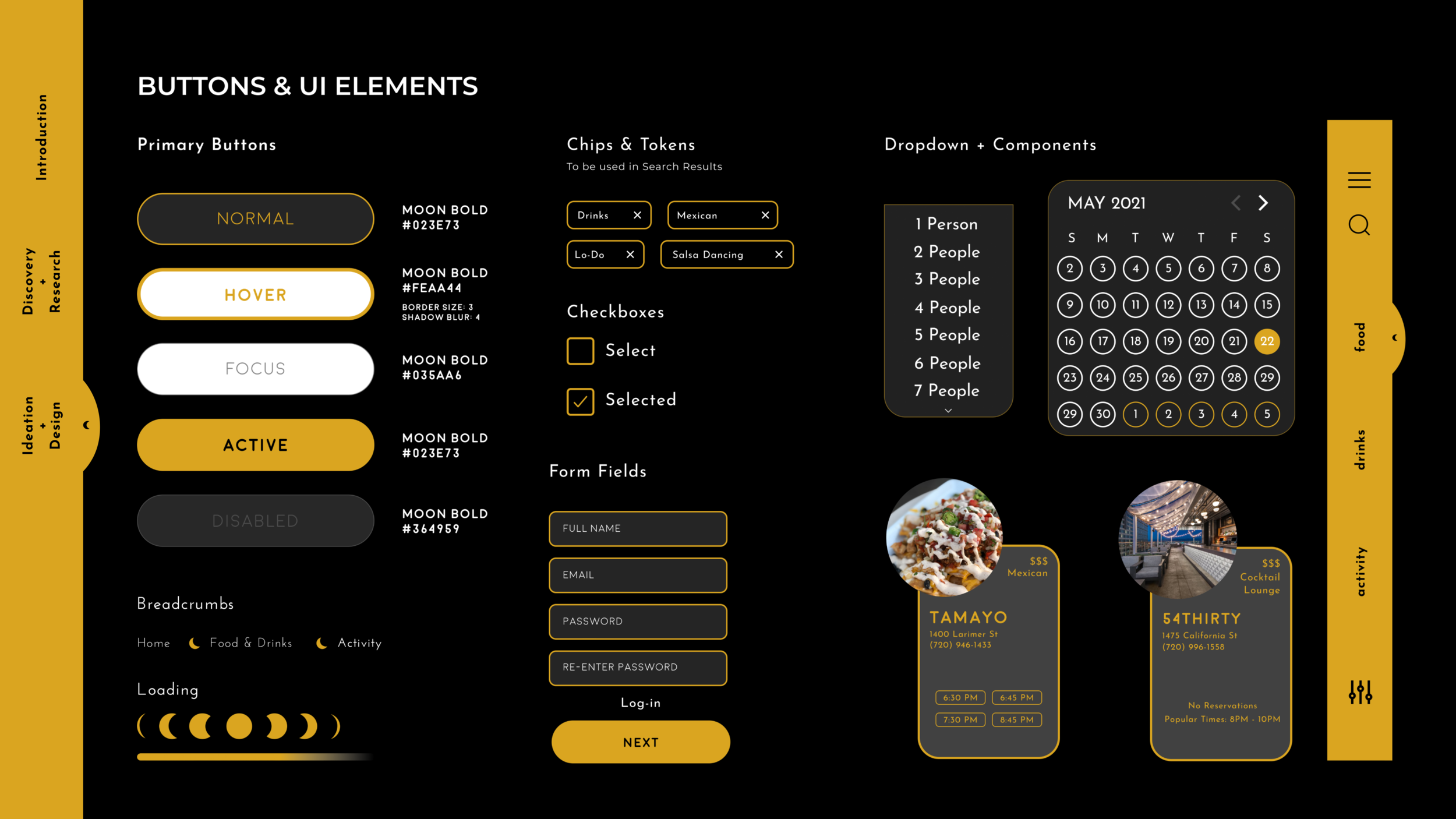
Testing
Knowing this would be responsive and geared more for people on the go, we began by wireframing a mobile version first.
We focused on asking our testers to follow our user path by completing four tasks:
Go through the onboarding process
Complete the questionnaire
Generate ideas for a night out by inputting information
Booking options
We tested our low-fidelity wireframes through Maze and through recorded tests. We had 16 responses with success rates of 94% or higher for each task.
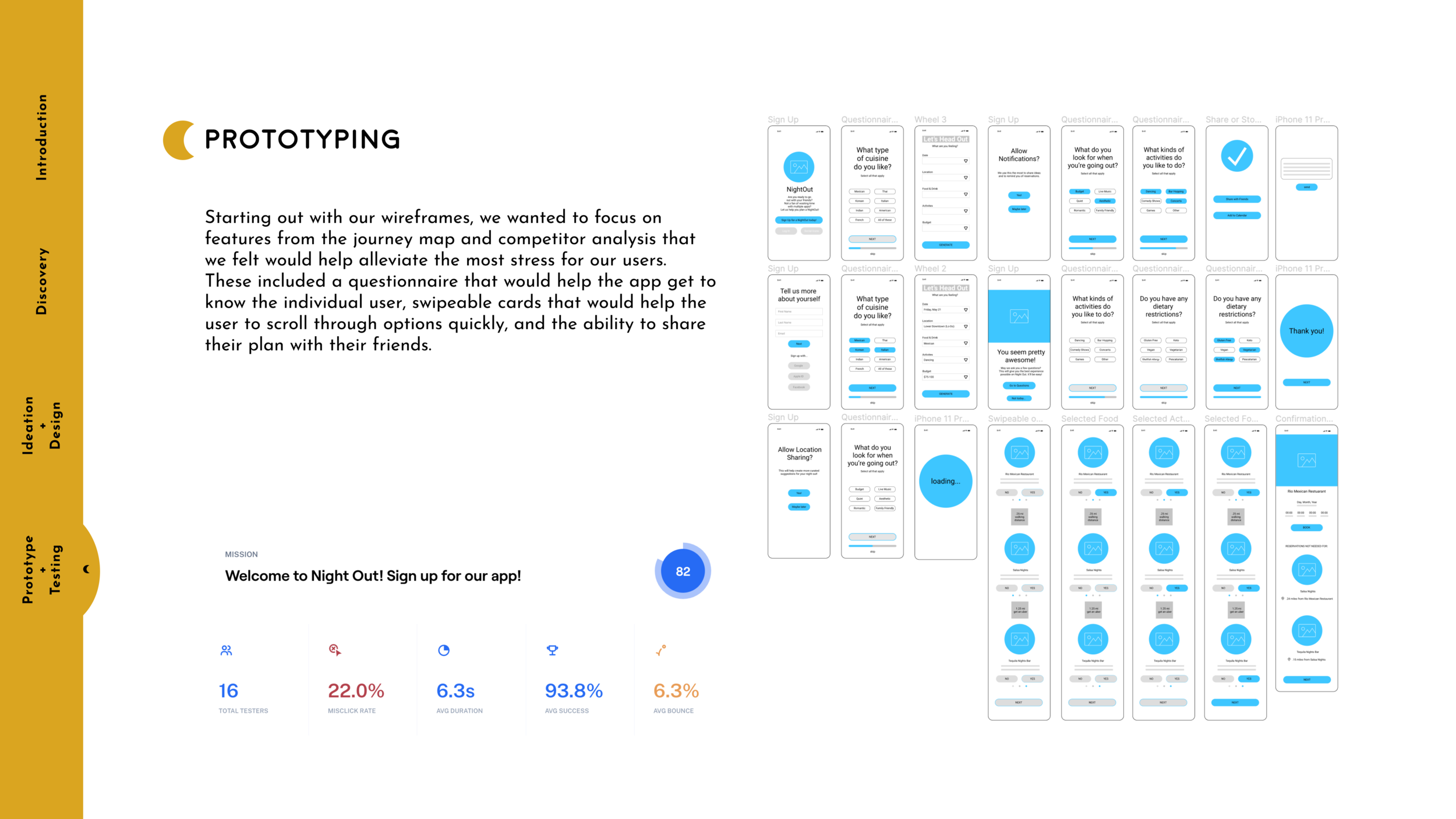
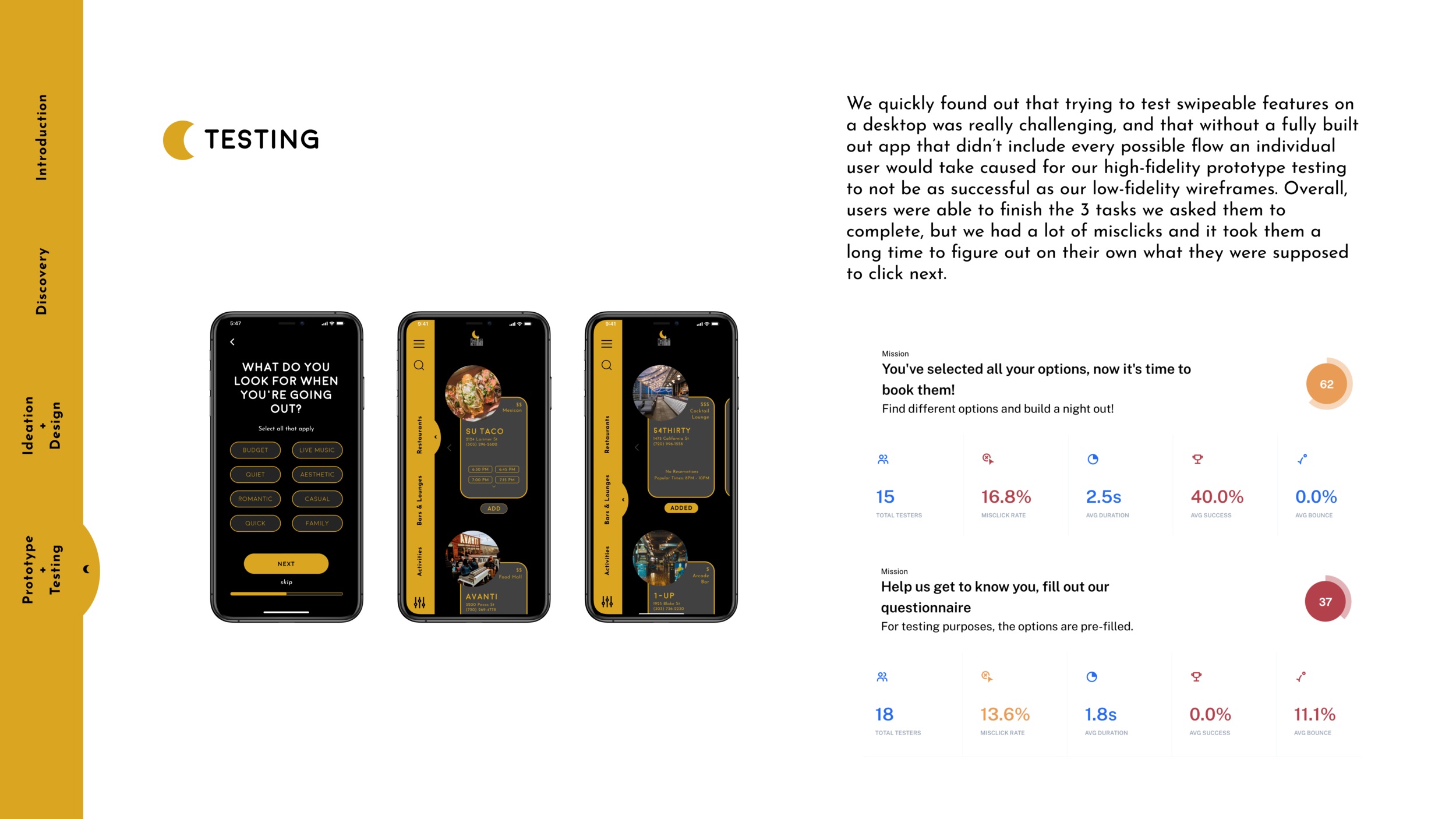
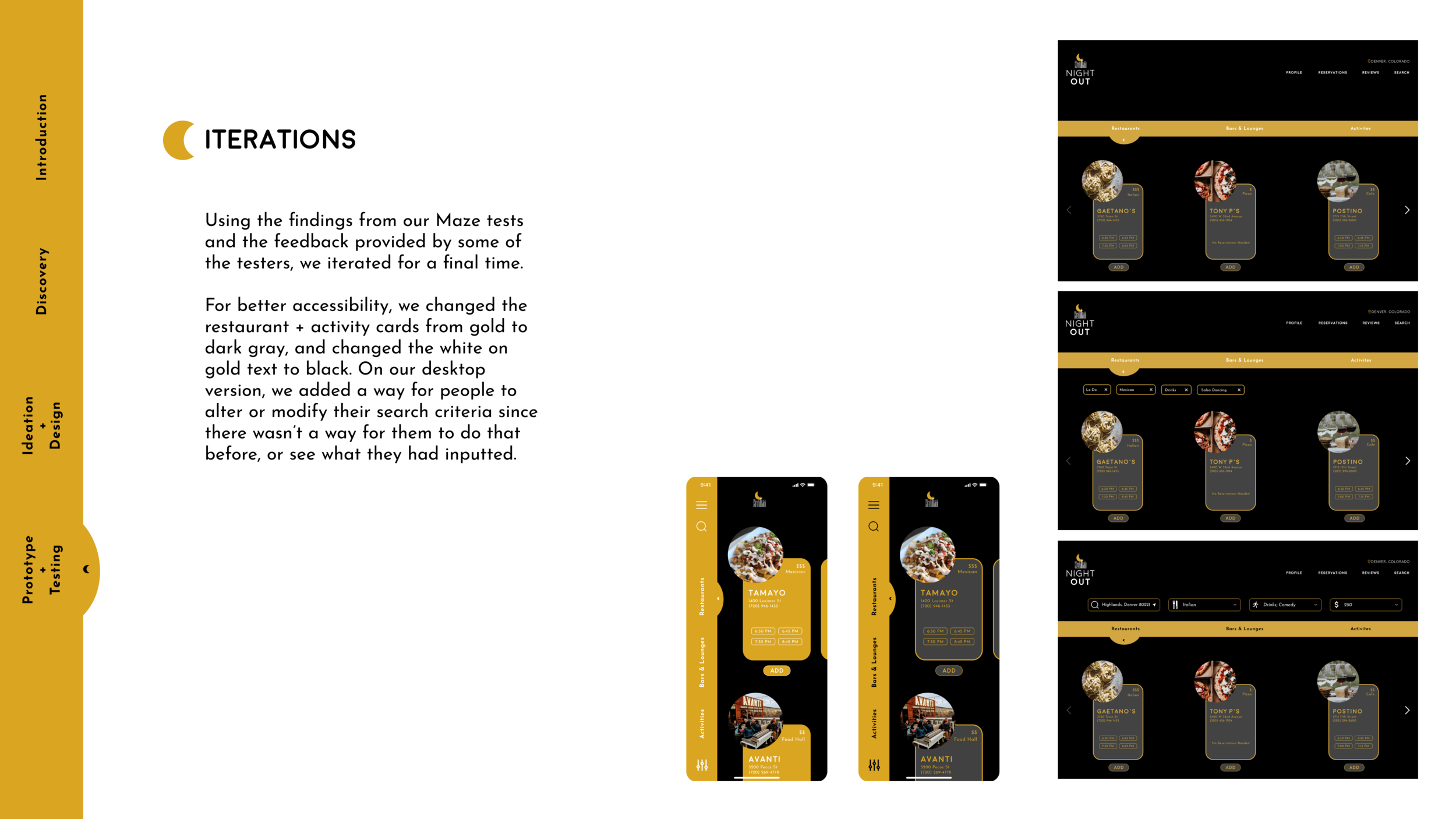
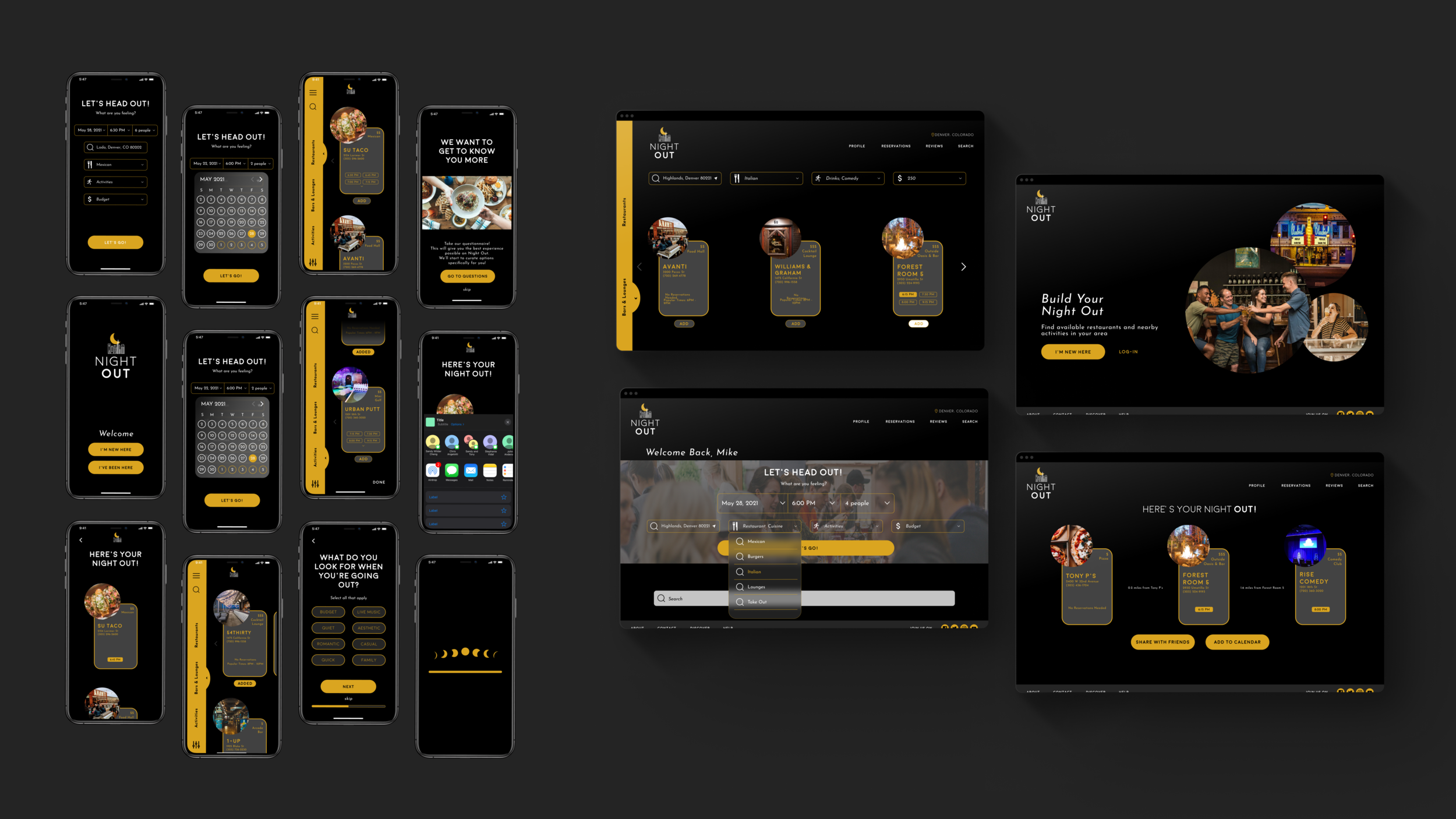
Reflection
Since this is such a robust app we have a lot of future iterations we would like to add. Our top three are Artificial Intelligence that learns your habits and suggests new places, cards with individual business details for the user to see more information, and the ability to place ads for businesses.
I personally would have loved more time to research in-depth the reason why people choose x or y when planning a night out. It would also be interesting to explore the decision-making that goes behind planning a night out, more specifically how much is planned ahead of time and how much is decided on the go.
